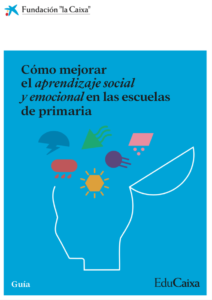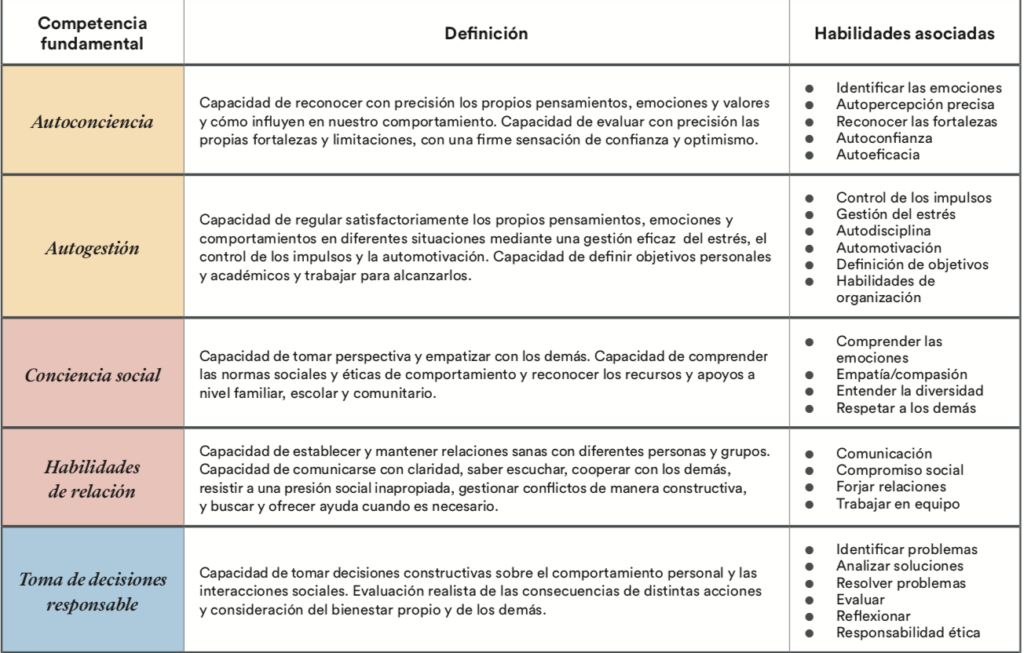Over the last three decades, the prevalence of emotional problems among children and adolescents (anxiety, depression, conduct disorders, etc.) has progressively increased. A study recently published by The Lancet shows that the emotional problems of individuals born between 2000 and 2002 come two years earlier than those of people born a decade earlier. According to UNICEF, more than 20% of adolescents around the world suffer from mental disorders and around 15% of those living in low and middle-income countries have considered suicide.
What’s happening to our children? Have we dangerously tipped the balance towards intellectual education and neglected the social-emotional factor? How can we help them?
In an increasingly complex society in which digitisation is modifying traditional family and community structures, we require a calm and profound reflection on whether the approach to education and care for children and adolescents is the right one and, above all, what the measures and actions to be carried out should be.
Social-emotional learning plays a fundamental role in the overall development of children, including, of course, their mental health. It goes beyond the acquisition of academic knowledge and focuses on the development of emotional, social and ethical skills and competences that enable them to understand and manage their own emotions, establish healthy relationships with others, make responsible decisions and develop empathy and resilience.
When we spend time teaching social-emotional skills, students can improve their motivation and behaviour, which can have a beneficial effect on their emotional well-being, mental health, and academic performance. This makes more sense when we focus on students from vulnerable environments, as they may suffer more from the consequences of not having tools to manage their social-emotional skills (La Caixa Foundation, 2023).
In view of the above, EduCaixa and the Education Endowment Foundation have published a guide offering some recommendations, scrupulously based on evidence, for implementing social-emotional learning in primary schools. We summarise the basics below before examining the subject in greater detail. To find out more, download the complete guide here.

Students from vulnerable backgrounds may suffer more acutely from the consequences of not having the tools to manage their social-emotional skills.
What is social-emotional learning?
Social-emotional Learning (SEL) refers to the process by means of which students learn to understand and manage their emotions, set and achieve positive goals, feel and show empathy towards others, build and maintain positive relationships and make responsible decisions.
What are these skills? The CASEL (Collaborative for Academic, Social and Emotional Learning) framework identifies five critical social-emotional skills that contribute to students’ well-being and success. These are self-awareness, self-management, social awareness, relationship skills and responsible decision-making.

Image: How to improve social and emotional learning in primary schools. EduCaixa, 2023.
There’s a large amount of evidence associating social and emotional skills in childhood with better results at school and in later life in relation to physical and mental health, educational maturity, academic performance, criminal behaviour, the employment rate and levels of income.
Below, in partnership with EduCaixa and the Education Endowment Foundation, we offer six recommendations for the successful implementation of social-emotional learning in schools.
Recommendation 1: Teach social-emotional learning skills explicitly
This recommendation provides examples of strategies that schools can use to develop social and emotional skills by means of explicit teaching that explains the strategies themselves. According to recent research, supporting teachers as they develop and use different strategies to teach essential social-emotional skills is an effective way of improving the implementation of an SEL programme. Let’s take a look at some of these strategies:
- To develop self-awareness, it’s essential to expand the students’ emotional vocabulary and help them to express their emotions through tales, stories, games and photographs.
- When it comes to self-management, teach the students to use calming strategies, such as counting to ten or the “turtle technique” and maintain a positive internal dialogue to help them to manage intense emotions.
- To develop social awareness, stories can be used to discuss emotions and understand the standpoints of others.
- As for relationship skills, situations can be dramatised in order to work on skills for communicating properly well and knowing how to listen.
- Problem-solving strategies can be taught and practised to ensure responsible decision-making (including the WOOP framework, a way of achieving objectives based on four pillars: wish, outcome, obstacle and plan).
Recommendation 2: Integrate and mould SEL skills into ordinary teaching
The ultimate goal of SEL is for students to use their knowledge and skills in their daily interactions with their peers and adults. Skill teaching is therefore likely to have more significant and longer-lasting effects when it’s integrated into everyday classroom interactions and across different subjects than when it’s provided in isolation. How can we do this?
- Shaping or demonstrating appropriate behaviours can teach and improve the students’ social and emotional skills.
- Always integrate the skills at the appropriate moments during the learning process. The school staff can use real classroom and playground situations to apply SEL strategies and skills in real time, creating opportunities for the children to put their new skills into practice.
- Don’t wait for moments of crisis to occur to teach skills. Although these situations can provide a highly useful context for teaching and reinforcing skills, if they’re only discussed on these occasions, the students may perceive them as only being related to avoiding inappropriate behaviours.
- Integrate SEL teaching into all the subjects. Teaching SEL skills within the context of the general curriculum can prove stimulating and help the students to apply what they’ve learnt. It will therefore be necessary for the teachers to identify opportunities to link SEL skills and integrate them into their ordinary teaching in a complementary manner.
Recommendation 3: Thoroughly plan the adoption of an SEL programme
While the first two recommendations focused on flexible teaching strategies, this one concentrates on structured programmes. There’s a great deal of international evidence that demonstrates the positive impact of planned SEL teaching programmes on different aspects, including the students’ attitude towards learning, school relationships and academic performance.
However, not all programmes are equally effective, as a result of which schools need to be cautious when it comes to selecting and implementing an approach that suits their needs and context. Good planning is also essential to ensure successful implementation.
How to implement a structured programme in schools
- Careful analysis, preparation and adaptation from the outset. Conduct thorough analysis and preparation before approving a programme: mere approval of an SEL programme is no guarantee of success. This is why it’s particularly important to identify an approach that suits the needs and context of the school, assess whether and how it can be implemented and draw up detailed planning in order to ensure that it’s successfully implemented.
- Constant evaluation. Once the programme has begun, regularly review how it’s being implemented and adapt it with caution.
Recommendation 4: Use a SAFE (sequential, active, focused and explicit) curriculum
Whichever SEL approach you adopt, you’ll achieve better results if you make sure that it’s sequential, active, focused and explicit (SAFE). This was established in a meta-analysis that studied the results of 213 SEL programmes. Let’s examine these four principles a little more:
- Sequence the teaching sessions to develop the skills progressively: “Sequencing” refers to the development of content within each course and across age groups.
- Use active ways of learning: The teaching strategies that work best for social-emotional learning are active forms of learning, including games, simulations and work in small groups.
- Focus the planning: Increasing the time currently spent on SEL would be highly beneficial. However, this increase must be procured by harmonising what’s effective and what’s feasible in practice. For example, there is evidence to suggest that frequent teaching is more effective than infrequent long sessions, that the programmes should last at least one year and that quality is more important than quantity.
- Be explicit about the skills you want to develop: for social-emotional learning programmes to achieve their expected effectiveness, the skills you propose to develop must be clearly defined and made explicit.
Recommendation 5: Reinforce the SEL skills through the value code and activities throughout the school
The SEL-related evidence tells us that, in order to maximise its positive effects, it’s vital to go beyond the curriculum and consider the school as a whole. Thus, it’s a good idea to establish rules, expectations and routines throughout the school to promote the students’ social and emotional development, align the school’s codes of conduct and those to prevent anti-bullying with the SEL programme, search for ideas and support from the staff and students on how the school environment can be improved and actively engage with families to reinforce the skills in the home environment.
Recommendation 6: Plan, support and monitor the implementation of the SEL
Thinking carefully about the implementation of the SEL is important for achieving good results and preventing its poor implementation from having negative effects on the morale of the school’s teachers and staff and the students’ engagement. How can we do this?
- By establishing a shared vision of the SEL. The first priority for the management team is to develop a shared vision of the SEL for the school that will help to foster the participation and engagement of all the stakeholders (teachers, students, and families). This vision should take into account the unique strengths of the school and share the hopes and expectations of the entire school community.
- By involving all the teachers in the planning of the SEL. Although the management task is essential, if the teachers and other members of the school staff aren’t asked about their vision of the SEL, the integration process is much less likely to be effective.
- By prioritising the quality of the implementation: the levels of preparation and motivation of the teachers with respect to the SEL are associated with better results.
- By offering training and support to all the school’s staff to cover the following aspects: willingness to change, development of skills and knowledge and support when integrating the changes.
- By monitoring the implementation and evaluating the effect of the approaches adopted. There are several specific reasons that justify the need to monitor and evaluate the implementation of social-emotional learning programmes. These include the flexibility of the strategies, the variability of the effects and the perceived implementation difficulties. In view of the above, schools must ensure that the monitoring and evaluation they perform are proportional to their needs and effort.
The proposal we’ve just reviewed is a clear example of the growing need to advocate a more complete and comprehensive style of education to support the appropriate learning of children from a very early age. For this reason, Diehl & Gómez (2020) state that children need to learn to identify and manage their emotions and make responsible decisions with respect to their health and well-being and that of others in order to achieve a full life with rewarding relationships. To achieve the above, it’s essential to act on the basis of the evidence of the research, which is demonstrating that, in order to achieve these objectives, learning social and emotional skills is as important as developing cognitive skills. This is particularly important if we consider that, in the current state of affairs, the world needs people who are committed to creating a better global society and a more sustainable planet.
References
Diehl, K. & R. Gómez. (2020). Socioemotional Development: the basics and implications. The Rise Institute. Viewed at Socioemotional-Development-the-basics-and-implications-FINAL.pdf (sientoxciento.org)
La Caixa Foundation. (2023). How to improve social and emotional learning at primary schools.






